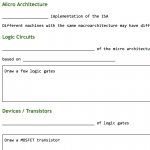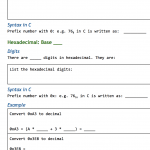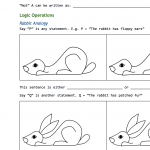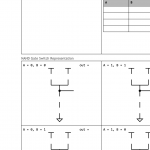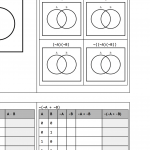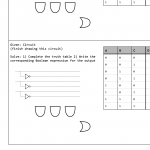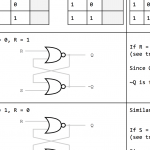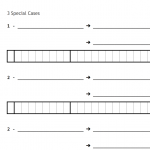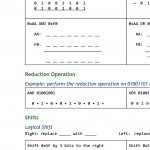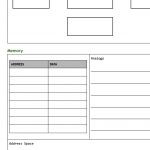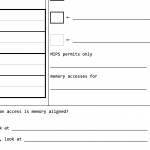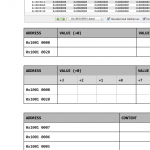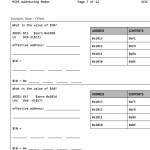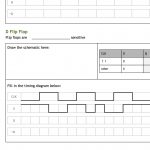I teach Computer Systems and Assembly language using fill-in-the-blank worksheets that I’ve designed. Research has shown that students who manually write out notes are more likely to retain information presented in class over students who type notes. Having these worksheets allows students to handwrite notes and follow along in class, without getting overwhelmed with feeling like they need to write everything. I include examples for students to work out both during lecture with their classmates, and outside of class.
How do I find the answers?
Spoiler alert! Here are instructions on how to view the answers.
Introduction
history of computing, computing levels of abstraction
Integer Numbering Systems
unary, grouping, positional, decimal, octal, hexadecimal, binary
Combinational Logic
MOSFET transistors, PMOS, NMOS, inverter, and, or, nand, nor, xor, xnor, Venn diagrams
CMOS
complementary metal oxide semiconductor field effect transistor circuits, logic gates from transistors
Boolean Algebra
boolean identities, DeMorgan’s Law
Blank Diagrams
worksheet to make up your own examples, includes blank Venn Diagrams, SOP PLAs, POS PLAs
Sequential Logic
SR latch, active high, active low, D latch, D flip flop
Data Representation
signed numbers, sign magnitude, two’s complement, bias / excess notation, floating point, fixed point
Arithmetic and Logical Operations
carry out, overflow, bitwise, reduction, shifts, rotate
Fractional Binary
Von Neumann Model
Von Neumann Architecture, processing unit, control unit, input, output, memory, address space, addressibility
MIPS Instructions
general purpose registers, assembler directives, data directives, labels, instruction format, instruction types, operate instructions, data movement (loads and stores), control flow instructions, little endian, big endian, memory alignment, pseudo instructions, instruction encoding
Memory Representation in MARS
MARS memory representation
Addressing Modes
register direct, immediate, register indirect, base + offset (displacement), PC relative, pseudo direct
Stacks and Subroutines
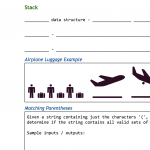
stack, jump instructions, return address, subroutines
Midterm Review
I designed this fill-in-the-blank study guide as a midterm review. It covers topics including numbering systems, logic gates, CMOS circuits, binary, Boolean logic and algebra, negative number representation, sequential logic, memory, addressability, and MIPS.
This is a living Google document. The most up-to-date version can be found here.

